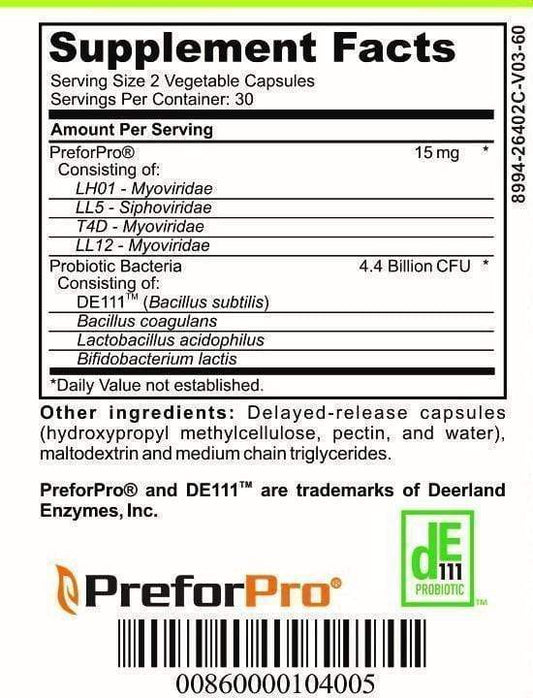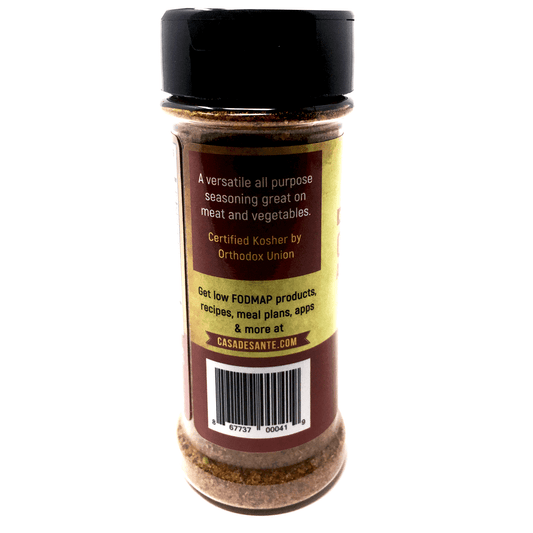Yeast Sinks To Bottom
Yeast fermentation is a complex process that involves a range of factors that can affect the final outcome of a beer or wine. One of the most noticeable aspects of yeast fermentation is the sedimentation of yeast to the bottom. Understanding why this happens is crucial to properly managing the fermentation process. In this article, we will dive into the science behind yeast fermentation and the factors that affect yeast sedimentation.
Understanding the Science Behind Yeast Fermentation
Yeast fermentation is a process in which yeast cells consume sugars and produce alcohol and carbon dioxide. This is a critical step in the production of beer and wine, as it is the primary factor that imparts the desired flavors and aromas. During fermentation, yeast cells multiply and consume the sugars in the wort or juice, producing alcohol and carbon dioxide. This process can take anywhere from a few days to several weeks, depending on the type of yeast used and the temperature at which fermentation takes place.
One important factor in yeast fermentation is the type of yeast used. Different strains of yeast can produce different flavors and aromas, which can greatly impact the final product. For example, some strains of yeast are known for producing fruity or spicy notes, while others may produce more earthy or floral flavors.
The temperature at which fermentation takes place also plays a crucial role in the process. If the temperature is too low, fermentation may not occur at all, while if it is too high, the yeast may produce off-flavors or even die off. It is important to carefully control the temperature during fermentation to ensure the best possible outcome.
Factors That Affect Yeast Fermentation and Sedimentation
Several factors can affect the rate of yeast fermentation and sedimentation. These include but are not limited to:
- Temperature
- pH
- Nutrient levels
- Oxygenation levels
- Yeast strain
- Type of sugars present
Another important factor that can affect yeast fermentation and sedimentation is the presence of other microorganisms. In some cases, the presence of bacteria or wild yeast strains can compete with the desired yeast strain and slow down or even halt fermentation. Additionally, certain bacteria can produce off-flavors and aromas that can negatively impact the final product. Proper sanitation and yeast management techniques can help minimize the impact of unwanted microorganisms.
The Role of Temperature in Yeast Sedimentation
The temperature at which fermentation takes place can greatly affect yeast sedimentation. Yeast cells tend to settle at the bottom of a fermenter when the temperature drops, as cooler temperatures slow down the rate of fermentation. This can result in a thicker layer of sediment at the bottom of the vessel. Conversely, warmer temperatures can cause more agitation and movement throughout the vessel, leading to a more dispersed layer of sediment.
It is important to note that the type of yeast being used can also impact sedimentation. Some strains of yeast are more prone to settling at the bottom of the vessel, while others may remain suspended in the liquid for longer periods of time. Additionally, the composition of the wort or must being fermented can also play a role in yeast sedimentation. Higher sugar concentrations, for example, can lead to a greater amount of sediment at the bottom of the vessel.
Differences in Yeast Strains and Their Sedimentation Properties
Not all yeast strains are created equal when it comes to sedimentation properties. Some yeast strains are known for their ability to settle to the bottom quickly, while others are more prone to remaining in suspension for longer periods of time. Understanding the properties of different yeast strains can help brewers and winemakers select the most appropriate strain for their desired outcome.
One factor that can affect yeast sedimentation is the temperature at which fermentation occurs. Cooler temperatures can slow down the settling process, while warmer temperatures can speed it up. Additionally, the composition of the fermentation medium, such as the type and amount of nutrients available, can also impact yeast sedimentation.
Another consideration when selecting a yeast strain is its ability to produce certain flavors and aromas. Some strains are known for producing fruity or spicy notes, while others may produce more earthy or floral characteristics. Brewers and winemakers may choose a strain based on the desired flavor profile of their final product.
Techniques for Separating Yeast from Sediment in Brewing
There are several techniques that can be used to separate yeast from sediment during the brewing process. These include:
- Racking
- Filtering
- Cold-crashing
- Centrifugation
Racking involves transferring beer or wine from one vessel to another, leaving the sediment behind. Filtering involves passing the liquid through a filtration system, which removes the sediment. Cold-crashing involves rapidly cooling the liquid, which causes the yeast to settle to the bottom more quickly. Centrifugation involves using a machine to spin the liquid and force the yeast to separate from the sediment.
Each of these techniques has its own advantages and disadvantages. Racking is a simple and inexpensive method, but it can be time-consuming and may not remove all of the sediment. Filtering is effective at removing sediment, but it can also remove some of the flavor and aroma compounds in the beer. Cold-crashing is a popular method among homebrewers, but it requires a cold environment and can take several days to complete. Centrifugation is the most efficient method, but it is also the most expensive and requires specialized equipment.
It is important to choose the right technique for your specific brewing needs. For example, if you are brewing a beer that is meant to be cloudy, such as a hefeweizen, you may not want to remove all of the yeast. On the other hand, if you are brewing a clear beer, such as a pilsner, you will want to use a technique that removes as much yeast and sediment as possible.
The Importance of Proper Yeast Management in Brewing and Winemaking
Proper yeast management is critical to the overall success of the fermentation process. This includes selecting the appropriate yeast strain for the desired outcome, maintaining the proper temperature and nutrient levels, and utilizing appropriate techniques for separating yeast from sediment. Poor yeast management can result in off-flavors, reduced clarity, and overall lower quality beer or wine.
One important aspect of yeast management is ensuring that the yeast is healthy and active before pitching it into the wort or must. This can be achieved through proper storage and handling of the yeast, as well as using a yeast starter to increase the cell count and vitality of the yeast. A healthy yeast population will lead to a more efficient fermentation and better flavor development.
In addition to proper yeast management during fermentation, it is also important to consider the impact of yeast on the final product. Some yeast strains can produce unique flavors and aromas, such as fruity or spicy notes, that can enhance the overall character of the beer or wine. By selecting the right yeast strain and managing it properly, brewers and winemakers can create a wide range of styles and flavors to suit their preferences and customers' tastes.
How to Minimize Off-Flavors Caused by Excess Yeast Sedimentation
Excess yeast sedimentation can be a source of off-flavors in beer and wine. To minimize this effect, it is essential to properly manage the fermentation process and utilize appropriate separation techniques. Additionally, allowing the beer or wine to settle for a period of time before bottling or kegging can also help reduce the presence of off-flavors.
One effective way to manage yeast sedimentation is to use fining agents, such as gelatin or isinglass, which can help to clarify the beer or wine and reduce the amount of yeast sediment. Another technique is to cold crash the beer or wine, which involves lowering the temperature of the liquid to encourage the yeast to settle to the bottom of the fermenter.
It is also important to properly sanitize all equipment and bottles to prevent contamination from wild yeast or bacteria, which can contribute to off-flavors. Regularly cleaning and maintaining equipment can also help to prevent the buildup of yeast sediment and other unwanted substances.
The Impact of Yeast Sedimentation on Beer and Wine Clarity
The amount of yeast sedimentation can greatly impact the overall clarity of beer and wine. A thicker layer of sediment can result in a cloudier final product. Proper yeast management and separation techniques can help reduce the presence of sediment and increase the clarity of the final product.
One of the main factors that contribute to yeast sedimentation is the type of yeast used in the brewing or winemaking process. Some strains of yeast are more prone to settling at the bottom of the container, while others tend to remain suspended in the liquid. By selecting the appropriate yeast strain, brewers and winemakers can control the amount of sedimentation and improve the clarity of the final product.
In addition to yeast management, other factors such as temperature, pH levels, and the use of fining agents can also affect the clarity of beer and wine. For example, high temperatures can cause proteins and other compounds to clump together and settle at the bottom of the container, leading to increased sedimentation. By carefully controlling these variables, brewers and winemakers can produce a clear, visually appealing product that is free from unwanted sediment.
Using Yeast Sedimentation as an Indicator of Fermentation Progression
Monitoring yeast sedimentation can be a useful tool for determining the progression of fermentation. As yeast cells consume sugars and produce alcohol, their tendency to settle to the bottom increases. Therefore, observing the thickness and clarity of the sediment can provide insight into the state of fermentation and help brewers and winemakers determine when it is time to move on to the next step in the process.
In conclusion, yeast sedimentation is an essential aspect of the fermentation process that can greatly impact the final outcome of beer and wine. Proper yeast management and separation techniques are critical to the overall success of the process and can help ensure that the final product is of the highest quality.
Another important factor to consider when monitoring yeast sedimentation is the temperature of the fermentation vessel. Higher temperatures can cause yeast to become more active and produce more sediment, while lower temperatures can slow down the process and result in less sediment. It is important to maintain a consistent temperature throughout the fermentation process to ensure accurate observations of yeast sedimentation.
Additionally, the type of yeast used can also affect the sedimentation process. Some strains of yeast are known to produce more sediment than others, and this can vary depending on the specific brewing or winemaking process being used. Understanding the characteristics of different yeast strains and how they impact sedimentation can help brewers and winemakers make more informed decisions about their fermentation process.
























